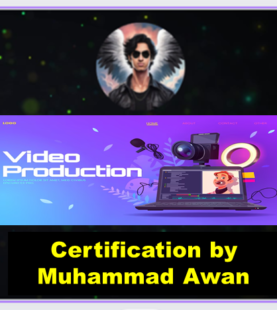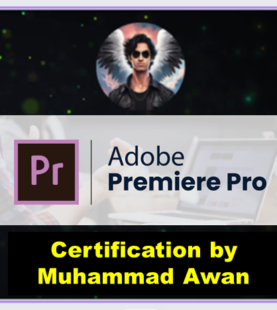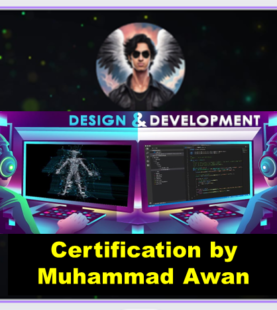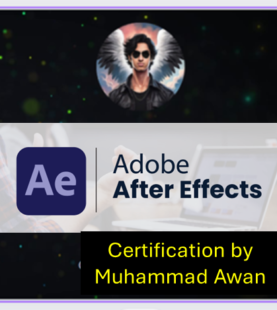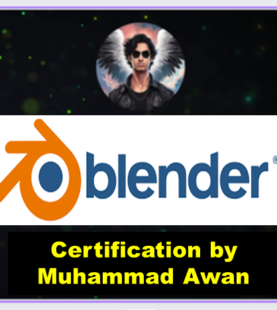Certified MIT App Inventor Specialist
- App Development, Design, Design / Branding, Graphic Designing, Marketing, Photography, Photography and Designs, Programming, Project Management
- 73 (Registered)
-
(0 Review)
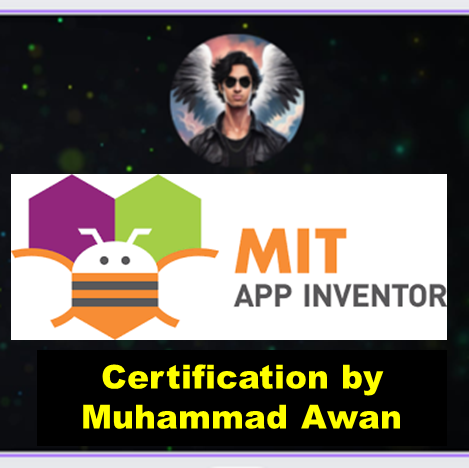
Learning Objectives of MIT App Inventor Course
A course focused on MIT App Inventor aims to equip learners with the skills and knowledge necessary to create mobile applications for Android devices using a visual, blocks-based programming environment. Here are the key learning objectives that such a course typically covers:
1. Introduction to App Inventor
- Understanding the Interface: Familiarize learners with the App Inventor interface, including the Designer and Blocks Editor.
- Navigating Components: Learn how to use drag-and-drop components to design the user interface of mobile apps.
2. Basic App Development
- Creating Simple Apps: Guide learners in creating their first apps by adding and configuring basic components such as buttons, text boxes, labels, and images.
- Event-Driven Programming: Introduce the concept of event-driven programming by defining how components respond to user interactions (e.g., button clicks, text input).
3. Blocks-Based Programming
- Blocks Editor Overview: Explore the Blocks Editor and understand how to connect visual blocks to create functional code.
- Control Structures: Teach basic control structures (e.g., loops, conditionals) using blocks to control the flow of app behavior.
4. Working with Built-in Components
- Using Sensors and Media: Learn how to integrate built-in components such as GPS, accelerometer, camera, and media playback into apps.
- Data Handling: Teach methods for storing and manipulating data within apps using variables, lists, and databases.
5. User Interface Design
- Layout Design: Guide learners in designing responsive and user-friendly layouts for various screen sizes and orientations.
- Graphic Assets: Introduce techniques for importing and using graphic assets (images, icons) to enhance app design.
6. Advanced App Features
- Web Connectivity: Explore how to connect apps to web services and APIs to fetch data or interact with online resources.
- Multi-Screen Apps: Teach techniques for creating apps with multiple screens and navigation between them.
7. Testing and Debugging
- Live Testing: Show learners how to use the live emulator to test apps in real-time on Android devices or emulators.
- Debugging Techniques: Introduce strategies for identifying and fixing common errors and issues in app development.
8. App Deployment and Distribution
- App Packaging: Guide learners in packaging their apps for distribution on Android devices or through app stores like Google Play.
- App Permissions and Security: Discuss considerations for app permissions and security best practices when deploying apps.
9. Project-Based Learning
- Hands-on Projects: Provide practical, project-based exercises that allow learners to apply their skills to create real-world mobile applications.
- Portfolio Development: Encourage learners to build a portfolio showcasing their apps and demonstrating their proficiency in using MIT App Inventor.
10. Collaboration and Community Engagement
- Community Resources: Introduce learners to online forums, resources, and communities where they can seek help, share projects, and collaborate with other App Inventor users.
- Open Source Contribution: Discuss opportunities for contributing to the MIT App Inventor community and exploring advanced features and extensions.
Conclusion
An MIT App Inventor course empowers learners to become proficient in mobile app development without requiring prior programming experience. By mastering these learning objectives, learners gain the skills and confidence to create interactive and functional Android applications, from simple prototypes to more complex, feature-rich apps. The course not only focuses on technical skills but also fosters creativity, problem-solving abilities, and collaboration within the app development community.
Curriculum
- 1 Section
- 10 Lessons
- 10 Weeks
- Lessons10
- 1.0App Deployment and Distribution in MIT App Inventor: From Creation to User’s Hands
- 1.1Basic App Development: Getting Started with Mobile App Creation
- 1.2Blocks-based Programming in MIT App Inventor
- 1.3Collaboration and Community Engagement in MIT App Inventor: Fostering Innovation and Learning Together
- 1.4Exploring Advanced App Features in MIT App Inventor
- 1.5Introduction to MIT App Inventor
- 1.6Project-Based Learning in MIT App Inventor: Empowering Creativity and Skill Development
- 1.7Testing and Debugging in MIT App Inventor: Ensuring Smooth App Performance
- 1.8User Interface Design in MIT App Inventor: Creating Intuitive Mobile Experiences
- 1.9Working with Built-in Components in MIT App Inventor
Instructor
🌟Aspiring Digital Artist, Animator, Cinematographer & Visual Effects Entrepreneur. 👨🏻💼CEO/Founder: https://ApexCreativeStudios.net offering Graphic Designing I Animation I Videography I VFX I Photography Services, 🎥Multimedia Coach: At https://BusinessCoach.sa creating & producing Graphic Designing content based on education, studies as well as business. 🎬Content Creator: At The Lounge, created & produced Digital Marketing content for Meta, Instagram, Tiktok & Youtube for my clients. 🌐At https://ApexCreativeStudios.net :

